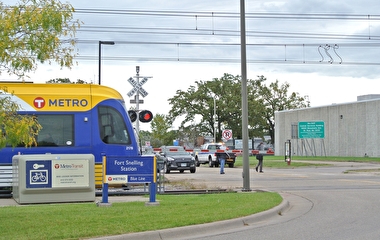A common assumption among transportation planners is that commuters want to minimize their travel time—and that they’ll pay good money to do so. But what if the ability to multitask while traveling alters that choice? Commuters might pick transit over a car—even when the transit alternative takes longer—if it allows them to use their travel time more productively.
“Multitasking is a hallmark of modern life that has the potential to impact not just our transportation behavior but also our location behavior—for example, it may make people less inclined to reduce their commuting distance or even move further away,” says Patricia Mokhtarian, a civil and environmental engineering professor at the Georgia Institute of Technology. “The traditional cost-benefit calculations used by transportation planners to justify transportation improvements may also be impacted, because travel multitasking could make people less willing to pay to reduce their travel time.”
At the CTS Fall Luncheon in December, Mokhtarian discussed her latest research that sheds light on the impact of multitasking behaviors and attitudes on commuters’ mode choice.
Mokhtarian’s research team surveyed more than 2,000 commuters in northern California in 2011. The researchers then analyzed how participants’ attitudes toward multitasking and their perceptions of travel modes affected their mode choices. They found that travel multitasking does have a statistically significant, though modest, impact on mode choice.
“We found that the more likely someone is to use or want to use a laptop on a given mode, the greater the chance that they’ll choose that mode,” says Mokhtarian. “This propensity to multitask appears to account for a not-insignificant slice of rail and carpool mode share. For example, if there were no laptops or tablets, rail share in the study area would drop .08 percent, making ridership 11 percent lower.”
Based on these findings, Mokhtarian believes the ability to multitask on transit offers a marketing opportunity for transit operators. “Transit has a unique appeal to the pro-technology, organized, and pro-multitasking commuter who wants to work during their commute, so it makes sense to market to these commuters who have a higher probability of choosing transit.”
These research results also point to potential future impacts of self-driving cars for transportation planners. “The competitive advantage rail and transit currently enjoy thanks to multitasking may be short-lived as driverless cars become a reality,” Mokhtarian says. “Our models show that a 1 percent to 3 percent bump in drive-alone share is possible in our study area as driverless cars allow people to multitask while in their own vehicle.”
Ultimately, the new modeling tool developed by her team can be used to inform transportation decision making as new technologies and changing attitudes make multitasking easier and more desirable, and as driverless vehicles become increasingly prevalent, Mokhtarian says.



